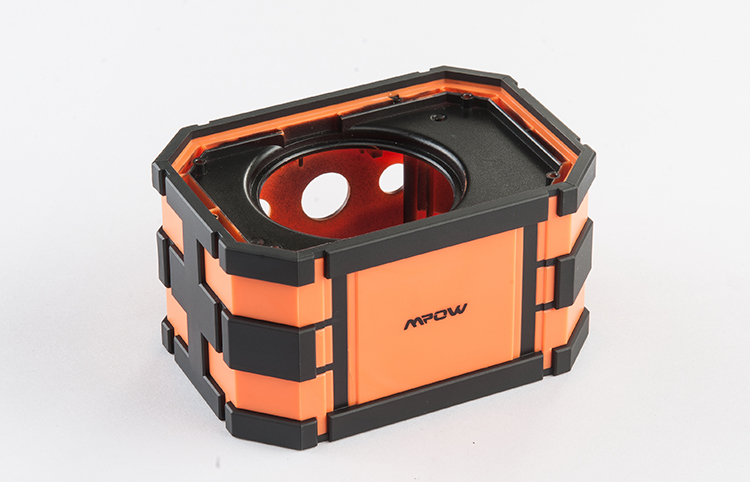 CN
CN info@seacomould.com
info@seacomould.com +86-18969612882
+86-18969612882
What performance requirements should be met when selecting steel for injection mold
2019-12-21
Plastic injection molds generally need to work in the high temperature environment of 150 degrees Celsius to 200 degrees Celsius when manufacturing plastic products in injection molding machines. Therefore, the selection of raw materials in the process of manufacturing injection molds requires great attention. This will It plays a crucial role in determining the overall service life of the injection mold and the quality of the plastic products produced. Then, what performance requirements should be met when selecting the raw materials for the injection mold steel?
The hardness of the injection mold is usually below 50-60HRC. The mold after heat treatment should have sufficient surface hardness to ensure that the mold has sufficient rigidity. Due to the large compressive stress and friction force of the mold during the filling and flow of the injection mold, the mold is required to maintain the stability of shape accuracy and dimensional accuracy to ensure that the mold has sufficient service life. The wear resistance of the mold depends on the chemical composition and heat treatment hardness of the steel, so increasing the hardness of the mold is conducive to enhancing its wear resistance.

1. Sufficient surface hardness and abrasion resistance
The hardness of the injection mold is usually below 50-60HRC. The mold after heat treatment should have sufficient surface hardness to ensure that the mold has sufficient rigidity. Due to the large compressive stress and friction force of the mold during the filling and flow of the injection mold, the mold is required to maintain the stability of shape accuracy and dimensional accuracy to ensure that the mold has sufficient service life. The wear resistance of the mold depends on the chemical composition and heat treatment hardness of the steel, so increasing the hardness of the mold is conducive to enhancing its wear resistance.
Second, excellent cutting processability
Most injection molding molds, in addition to EMD processing, also need to perform some cutting processing and fitter repair. In order to extend the service life of cutting tools, enhance cutting performance, and reduce surface roughness, the hardness of steel for injection molds must be appropriate.Third, the 50-grade carbon steel has a certain strength and abrasion resistance
after quenching and tempering treatment, it is mostly used for mold base materials. High-carbon tool steel and low-alloy tool steel have high strength and wear resistance after heat treatment, and are mostly used for forming parts. However, high-carbon tool steel is only suitable for manufacturing small-sized and simple-shaped formed parts due to its large heat treatment deformation.
Fourth, good thermal stability
The shape of the injection molding injection mold parts is often more complex and difficult to process after quenching, so it should be selected as far as possible with good thermal stability. When the two-color mold forming process is heat treated, the linear expansion coefficient is small and the heat treatment is deformed. Small, the dimensional change rate caused by temperature difference is small, the metallographic structure and the mold size are stable, which can be reduced or no longer processed, and the dimensional accuracy and surface roughness requirements of the mold can be guaranteed.Fifth, good polishing performance
High-quality two-color injection molding products require a small surface roughness value. For example, the surface roughness value of the cavity of the injection molding model is required to be less than Ra0.1 to 0.25, and the optical surface is required to be Ra <0.01nm. The cavity must be polished to reduce the surface roughness value. The steel selected for this purpose requires less material impurities, fine and uniform structure, no fiber orientation, and no pitting or orange peel defects should appear during polishing.Commonly used mold materials:
In the Pearl River Delta region of Guangdong, such as Shenzhen and Dongguan, plastic injection mold materials commonly used for imported injection mold materials are usually selected: 1) Sweden 8407; 2) S136, US 420 & H13; 3) Europe 2316 & 2344,083; 4) Japan's SKD61 & DC53 (formerly metal mold materials, used in special cases). These materials have better cutting performance, heat treatment and polishing performance and higher strength.Related Products
Latest Updated
- China automotive mold manufacturing is facing the development trend of 2025
- The major development trend of automotive mould technology
- How to find a good automotive mould supplier and manufacturer in China
- How to make the injection plastic mould gate design
- The most likely defects in the mold injection molding process
- Injection mold repair steps and precautions
- Auto mould making-automould injection moulding company
- How to choose plastic mould supplier in Taizhou China
Relative Articles
- Is NAK80 good steel to make mirror polish mold
- which steel is good to make injection mould
- The impact of plastic cap materials on the mold
- Raw material analysis of plastic bottle cap products
- The impact of plastic cap materials on the mold shows that
- The performance requirements of plastic bottle cap mold steel
- Surface treatment technology of plastic mold steel
- What are the classifications of mold steel by usage
- What kind of steel is good for bottle cap mould
- What are the characteristics of bottle cap mold materials
Hot Articles
- Mold plating chrome treatment technology is good for mold life
- Analysis of the causes of the fusion line of plastic mold products and corresponding improvement measures
- what are the common problem in the plastic mould injection process
- Leak-proof design of bottle cap mould
- What performance requirements should be met when selecting steel for injection mold
- When Huangyan Mold factory come back to work after coronavirus
- Coronavirus China Wuhan
- How to check the test of the injection mould
- How to choose plastic mould supplier in Taizhou China
- What principles should be followed in the design and development of bumpers mould
- Bottle cap mold manufacturing process
- Six standards for testing the quality of antifreeze bucket mould
Hot tags: china mold maker,taizhou,huangyan, suppliers, manufacturers, factory, maker,customized







